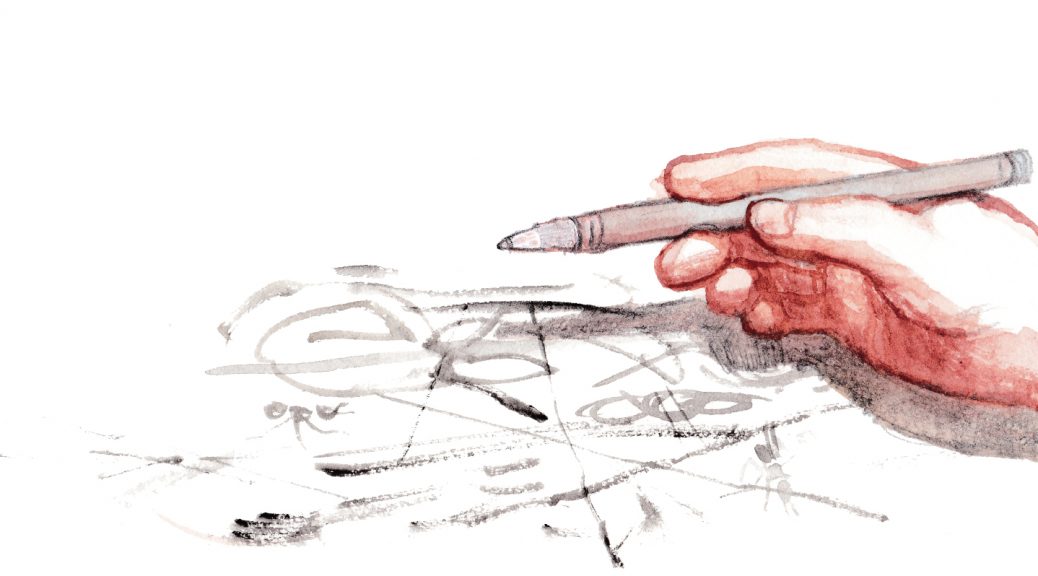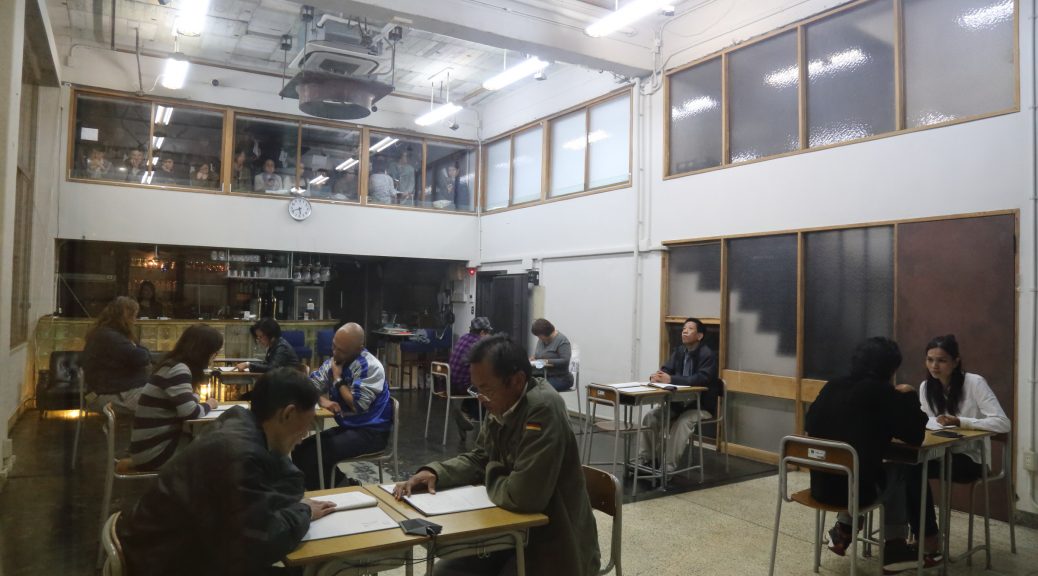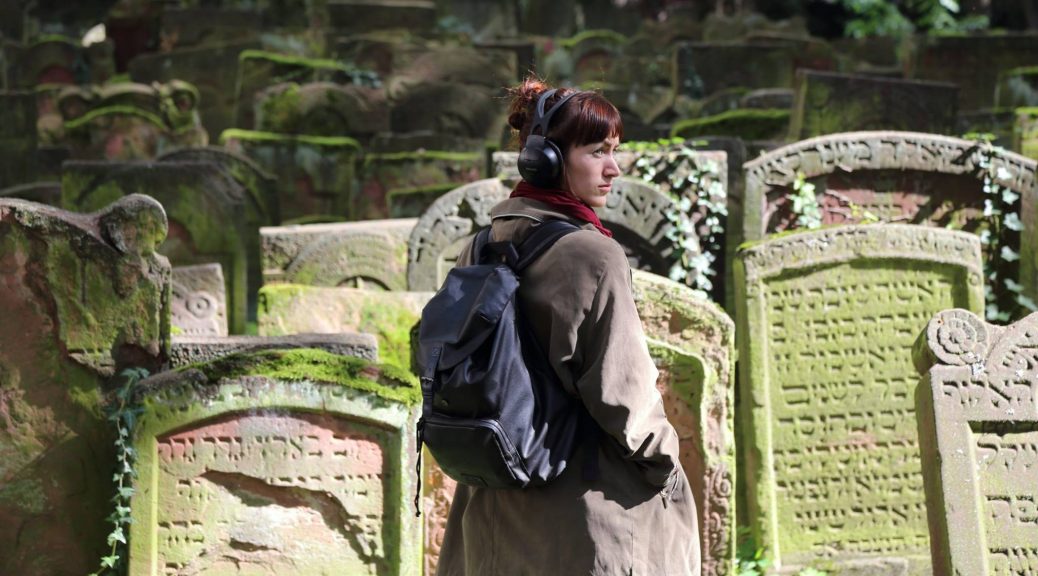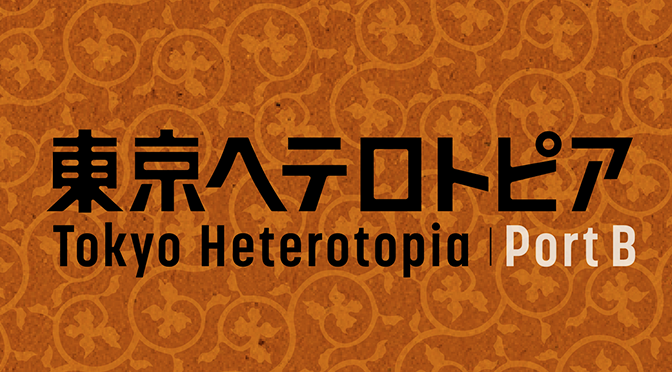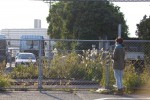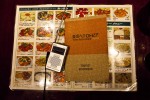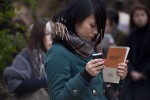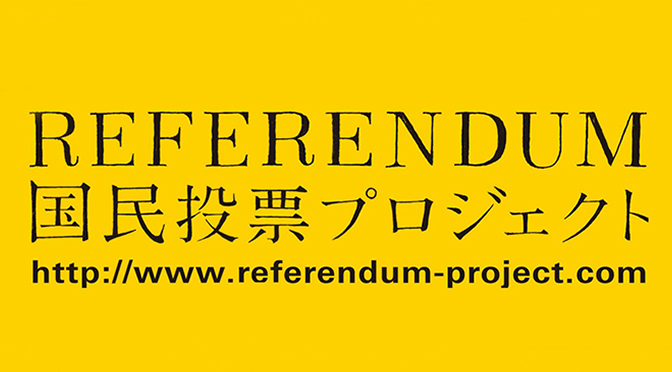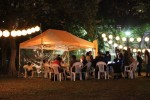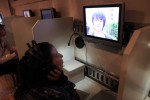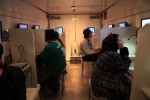Oita Toirennale, Oita / Japan
Tag Archives: Project Series
Yokohama Commune
Re-inquiring into migrating, changing Japan and the Japanese language
This installation was exhibited at the Yokohama Triennale 2014. Created out of research into Asian communities in Yokohama, it explores themes of the nature of Japan and the Japanese language.
The installation at the Yokohama Museum of Art featured the voices of people who, for a variety of reasons, had fled their homelands and come to Japan, either alone or with their families. The voices spoke in Japanese but it was the Japanese of refugees from Indochina. The work explores how language and communities are always shifting between migration and settlement, always on a journey to somewhere. At the end of the Triennale, the work itself then migrated from the Yokohama Museum of Art to Koganecho, where it transformed into a live installation.
The venue in Koganecho in Yokohama was created in the form of a classroom for learning Japanese. It became a place for encounters between Indochina refugees and day labourers living in Kotobuki. The installation paired the “immigrants” and “residents” together in the manner of Japanese language exchanges. Who is the teacher and who is the student? The roles were interchangeable. The “textbooks” were excerpts from Ray Bradbury’s Fahrenheit 451, the central motif for the Yokohama Triennale. The pairs read passages to each other in the style of a lesson drill. They then asked each other questions about the texts like a classroom conversation practice exercise. The participants arrived at their mutual memories using Japanese, though it may not be what we presume. On the second floor of the venue visitors could sit and watch the “lessons” through a glass window. Visitors were also given small transistor radios. Tuning these to certain frequencies allowed visitors to eavesdrop on the conversations happening at the classroom desks.
In this way, the live installation was both a kind of Japanese classroom experience but also simultaneously a performance of Fahrenheit 451. Through the medium of the Japanese language as something always migrating and changing, it brought together peers with alien voices: a transient, wandering commune and community.
The Complete Manual of Evacuation (Frankfurt version)
“Detour theatre” connecting cities
“The Complete Manual of Evacuation” was first devised for Festival/Tokyo 2010 and was then recreated on a large scale by Künstlerhaus Mousonturm in Frankfurt. It connected seven cities in the Frankfurt Rhine-Main region through theatrical layers. Audiences first went to the project website. They answered certain questions and then downloaded maps guiding them to 40 “evacuation” points. The sites were categorized into four “tours” and were created by Port B in collaboration with another 15 artists and artist groups. It was up to the audience to choose which evacuation points to visit and in which order. The audience became “evacuees”, transferring their bodies as performers in a theatre of places connected by detours. Selected by leading German-language theatre review website Nachtkritik as one of the best 10 theatre works performed in German-speaking countries in 2014.
EVAKUIEREN
http://www.evacuation.jp/frankfurt/
Referendum Project installation (Berlin)
Tokyo Heterotopia
A theatrical journey of encounters with Another Tokyo
Participants received a guidebook and portable transistor radio, and then were free to visit, in whichever order they wished, 13 locations that revealed the Asia that exists inside Tokyo. After arriving at a site, they tuned their radio to the designated frequency to hear a story about the location, written by four poets and novelists. The narratives were created based on research by the Port Tourism Research Center. For the most part they were read by people whose native language was not Japanese. The locations included religious facilities, monuments, the site of a former refugee center, and ethnic restaurants. The journey around Tokyo invited participants on a tour of alien cultures within the familiar city landscape.
“Tokyo Heterotopia” will become a smartphone app, continuing to expand ahead of the 2020 Tokyo Olympics. “Heterotopia” series projects are also planned for other cities in Japan and elsewhere.
Referendum Project (Rotterdam)
Referendum Project (Vienna)
Installation (Academy of Arts Vienna)
Referendum Project (Mito)
“ Referendum Project” installation (Art Tower Mito)
Referendum Project Tohoku tour (Miyagi, Iwate)
Referendum Project Tohoku tour (Miyagi, Iwate)
Referendum Project
A mobile theatre project archiving Japan’s post-3.11 voices
This project is a theatrical response to questions that arose from the Fukushima nuclear disaster and the Tohoku tsunami: What are our voices and how can we hear them? The project features a refrigerated truck converted into a video installation with viewing booths and “Referendum Project” written on the outside. Visitors can enter and select DVDs to watch. Junior high school students from Tokyo and Fukushima were interviewed with the same everyday questions: What do you want the most right now? What would you do if you were prime minister? What will Fukushima/ Tokyo be like in the future? What do you understand the least right now? What is your dream?
The audience is free to watch whichever and how many DVDs they want. Afterwards, they too are asked the same questions; they write their answers on a “ballot paper” and place it in a quasiballot box. These “votes” are then published on the project website, together with the students’ interviews forming an archive of the voices of people in Japan.
The project collects the voices of students too young to participate directly in politics, and asks audiences to consider larger questions that are not simply a case of for or against. In this way, the work is a national referendum in the form of a theatre project.
In 2011, the truck and its voices first went on a tour around Tokyo and Fukushima. During the onemonth “performance” talks were held at each stopping point, inviting guest speakers to discuss postwar Japanese politics, policy-making, and culture. These talks were later published.
In 2012, the Referendum Project toured the areas in Tohoku hit by the 3.11 disaster. In spring 2014, it visited Hiroshima and Nagasaki. The project is ongoing, continuing to add new junior high school student interviews and audience “votes” and build up a body of post-2011 voices.
The interviews featured in “Referendum Project” have been exhibited at Art Tower Mito, Wiener Festwochen, the Schouwburg Theater in Rotterdam, Hebbel am Ufer in Berlin, and Künstlerhaus Mousonturm in Frankfurt am Main.
Referendum Project
Referendum Project F/T11
